
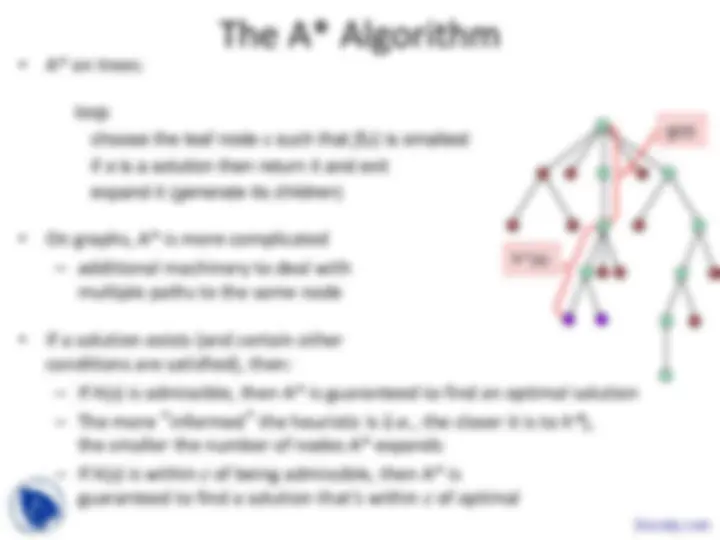
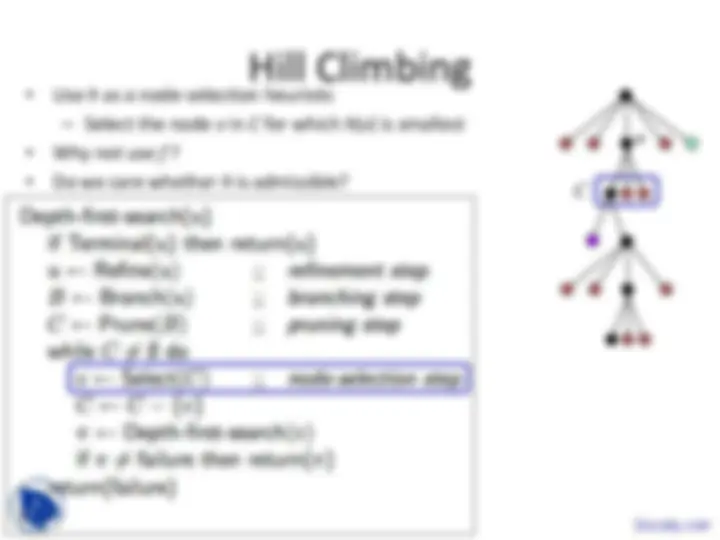
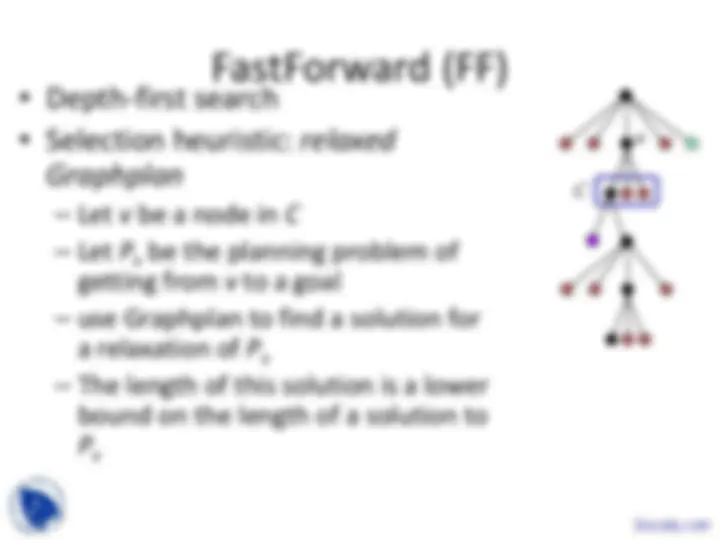
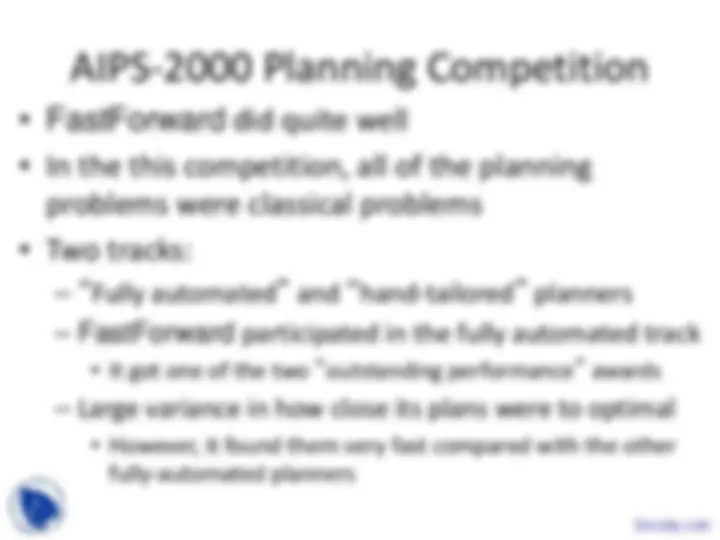


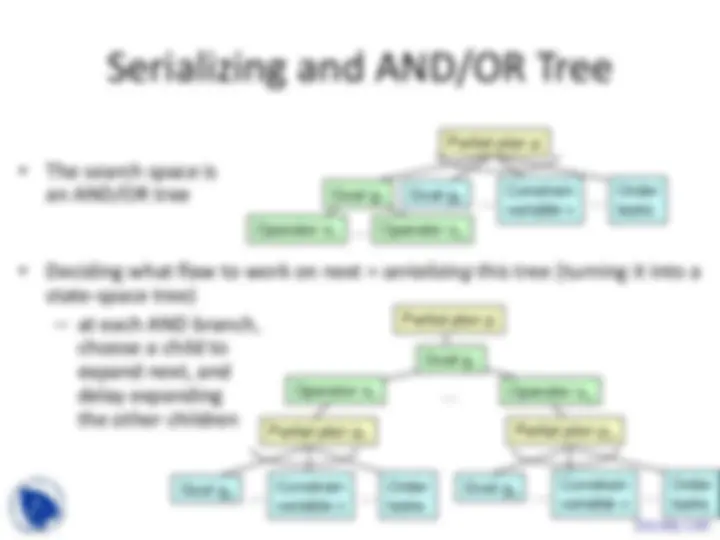
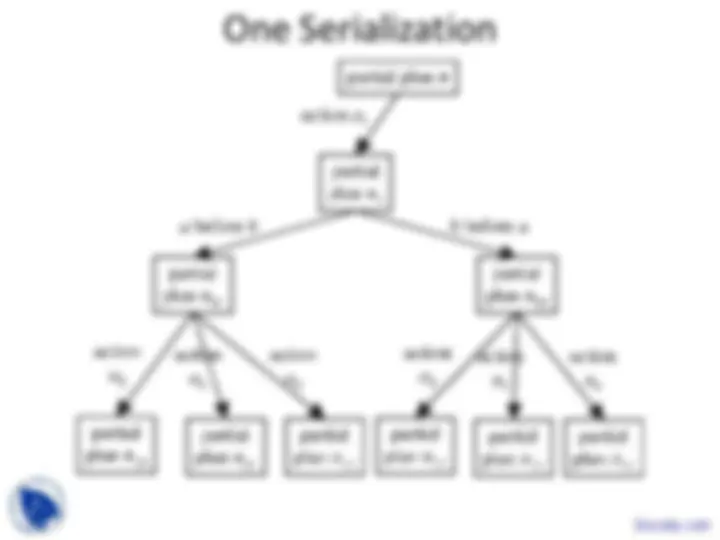
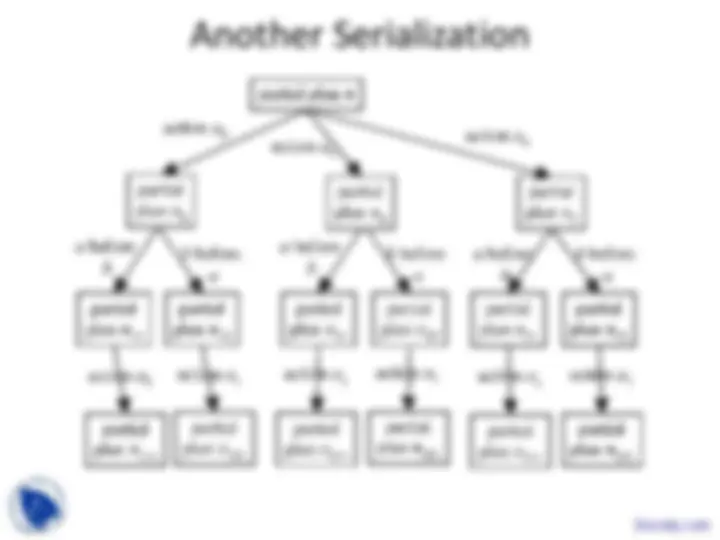
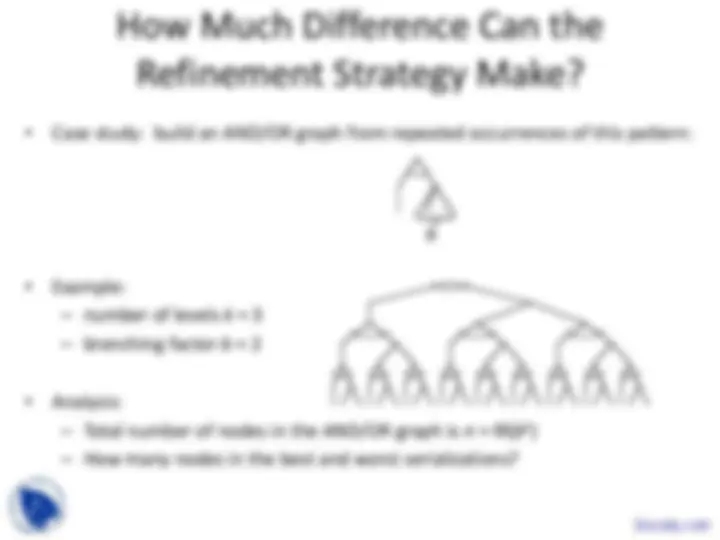
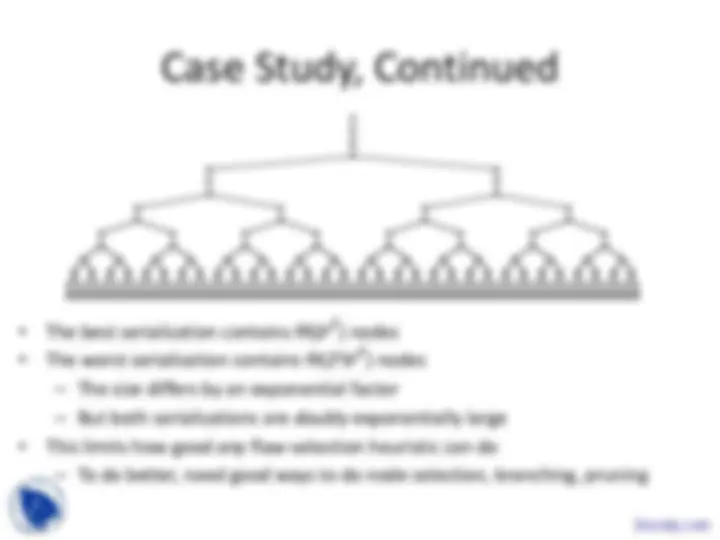
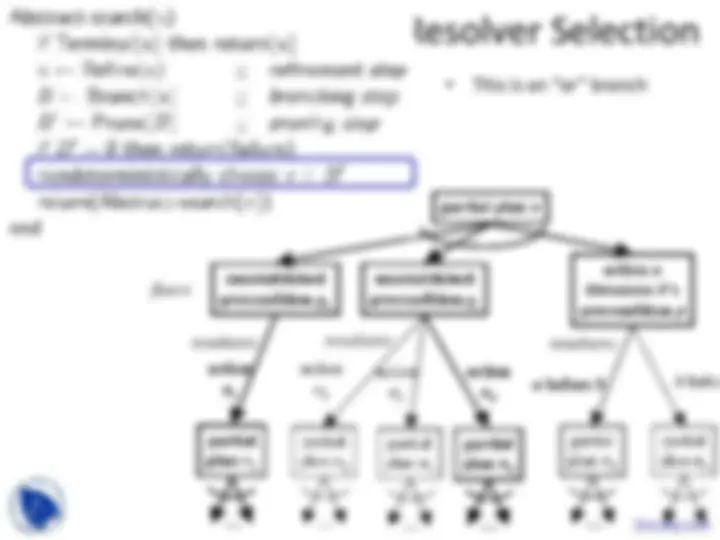


Study with the several resources on Docsity

Earn points by helping other students or get them with a premium plan


Prepare for your exams
Study with the several resources on Docsity

Earn points to download
Earn points by helping other students or get them with a premium plan
Community
Ask the community for help and clear up your study doubts
Discover the best universities in your country according to Docsity users
Free resources
Download our free guides on studying techniques, anxiety management strategies, and thesis advice from Docsity tutors
These are the lecture Slides of Automated Planning which includes Domain-Independent Planners, Abstract Search Procedure, Planning Algorithms, Current Set of Solutions, Unpromising Members, Loop Detection, Constraint Violation etc. Key important points are: Heuristics in Planning, Classical Planning, Goal Nodes, Multiple Paths, Number of Nodes, Optimal Solution, Hill Climbing, Node-Selection Heuristic, Solution for Relaxation, Depth-First Search
Typology: Slides
1 / 20

This page cannot be seen from the preview
Don't miss anything!













Digression: the A* algorithm (on trees)
g(s)
h*(s)
u
u
2004 International Planning
Competition
Plan-Space Planning
… …
…
Operator o 1 … Operator o n
Goal g 1 Goal g 2 Constrain variable v
Order tasks
Partial plan p
Partial plan p
Goal g 1 Operator o (^1) Operator o n
Partial plan p 1 Partial plan p n
Goal g (^2) … Constrainvariable v …^ Ordertasks Goal g (^2) … Constrainvariable v …^ Ordertasks
One Serialization
Resolver Selection